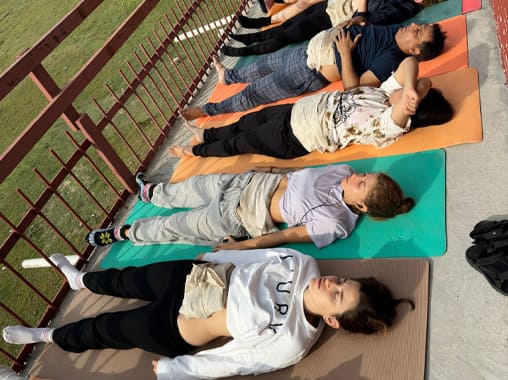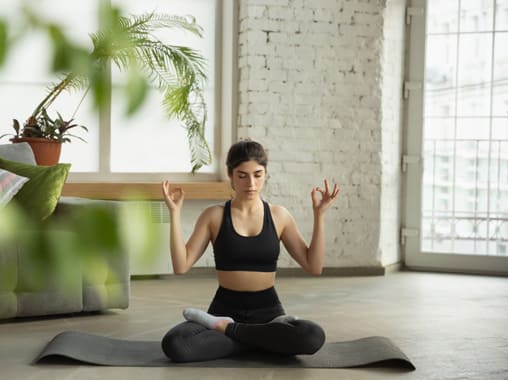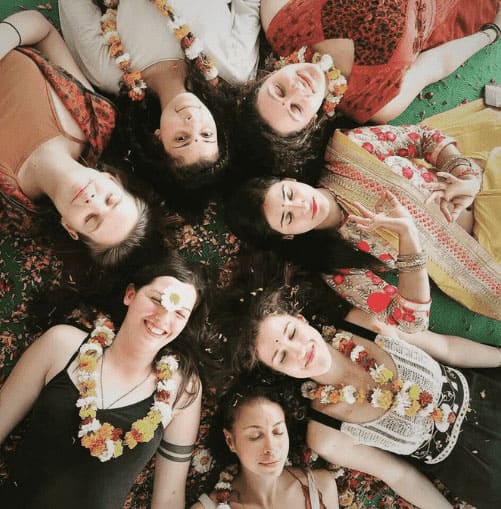Yoga is a great way to ease knee pain and promote healing for those suffering from chronic knee pain. Many people turned to yoga when other treatments failed and when the pain is too severe to continue with more traditional therapies.
Yoga helps to strengthen the muscles that support the knee joints, which can help to relieve the knee pain. In addition, it helps to improve the range of motion and flexibility, in the knee joint reducing the risk of injury and further strain on the knee.
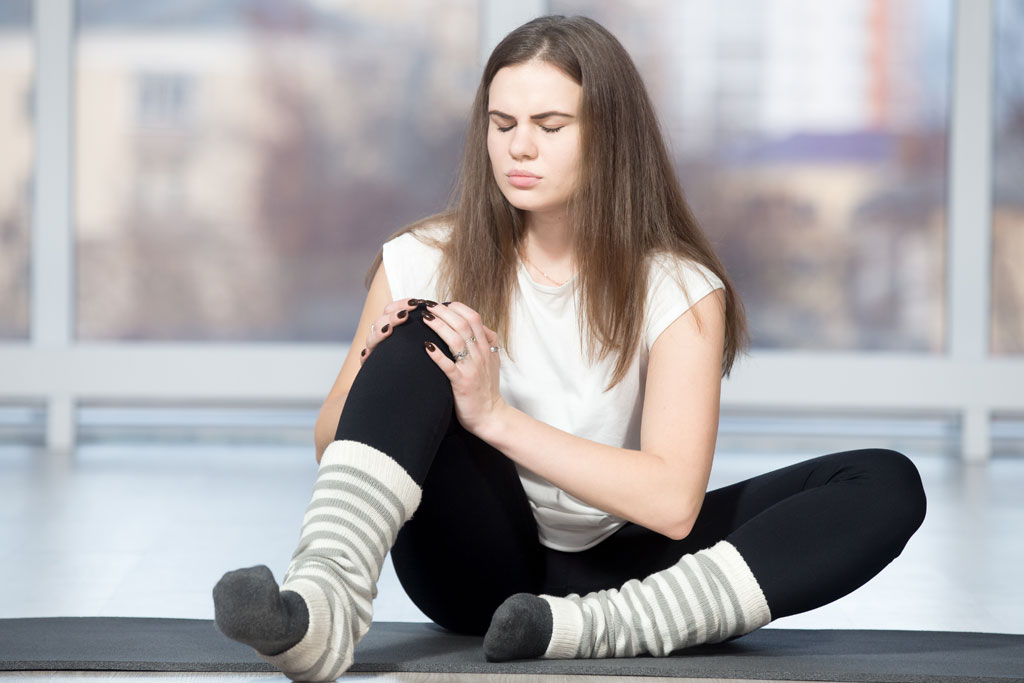
Common Causes of Knee Pain
People of all ages frequently experience knee pain. Numerous things, such as an injury, excessive use, arthritis, and even improper posture, might contribute to it. A combination of these variables may occasionally be the source of knee pain. Finding the best treatment and avoiding future joint injuries require an understanding of the underlying causes of knee discomfort.
Benefits of Yoga for Knee Pain
Yoga is an excellent sort of physical activity that is ideal for preserving total mental and physical wellness. However, did you know it can also relieve knee pain? According to studies, understanding the power of yoga and practicing it daily can be a potent and secure strategy to reduce knee pain and stiffness.
The advantages of yoga for people with knee discomfort are numerous. The muscles that support the knees and hips are strengthened by yoga. By lowering the strain exerted on the knee joint, this enhanced strength can help prevent subsequent injuries. Additionally, yoga helps to increase flexibility, which is important for increasing mobility. Stretching facilitates more pleasant mobility by easing stiffness and pain.
Yoga also aids in enhancing stability and balance. Falling, which can frequently be the cause of knee discomfort, can be avoided with improved balance. The likelihood of suffering another injury is significantly decreased by developing stronger core muscles and better balance.
Yoga is helpful for enhancing posture, which can help to lessen knee pain’s discomfort. The pain may become worse by pushing the knees out of alignment due to poor posture. By adjusting posture, the body’s weight is better distributed, relieving pressure on the joints.
Yoga also aids with stress reduction. Stress can impede the body’s ability to heal and be a significant cause of pain. Yoga can assist in lowering stress and enhancing general health by emptying the mind and concentrating on the breath.
Yoga can be a wonderful approach to help folks with knee pain find relief. Strengthening, stretching, enhancing balance and posture, and lowering stress can all help to lessen the discomfort and anguish brought on by knee pain. It is crucial to see a doctor or other trained medical practitioner before beginning any fitness programme to ensure that it is safe for your specific requirements.
Best Yoga Poses to help with Knee Pain
It’s no secret that knee discomfort may be terribly painful and debilitating. But fortunately, yoga can provide some solace. Yoga is a fantastic approach to increasing flexibility and range of motion while also strengthening the muscles that surround the knee joint. Here are 7 of the most effective yoga positions for easing knee pain.
1) The Butterfly Pose (Titliasana)
This pose stretches the muscles in the inguinal region and the knee joint. Additionally, it improves in increasing the hip joint’s range of motion. Sit on the ground and bring your feet’s soles together to perform this pose. Slowly lower your torso toward your feet while giving your feet a hand hug. Spend 5 to 10 breaths in this position.
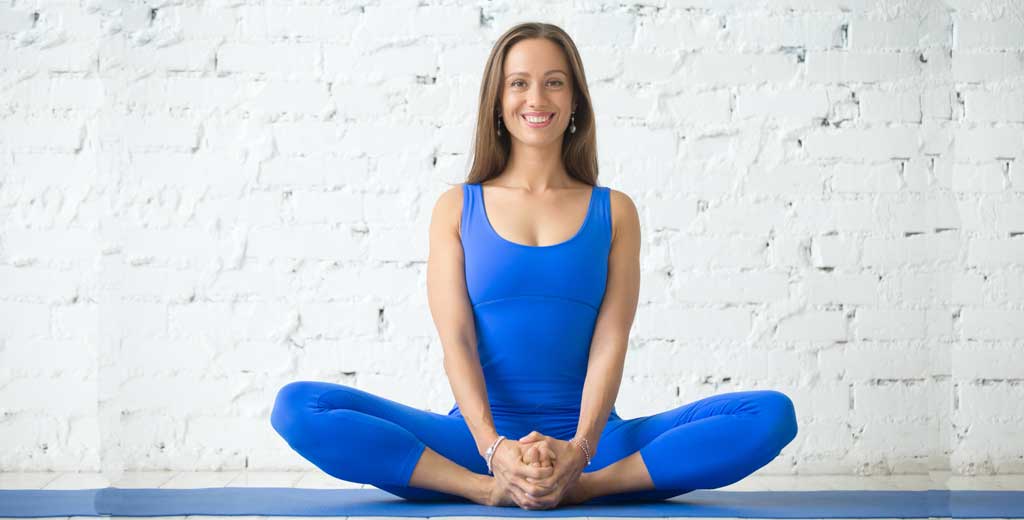
2) The Half-Pigeon Pose (Ardha Kapotasana)
This pose works on the muscles that surround the knee joint and the hip flexors. Start on your hands and knees to perform this pose. Slide the second leg behind you until the foot is flat on the ground, then shift your weight to that leg. Flex the knee of the bent leg while keeping the hip of the leg on the floor. Spend 5 to 10 breaths in this position.
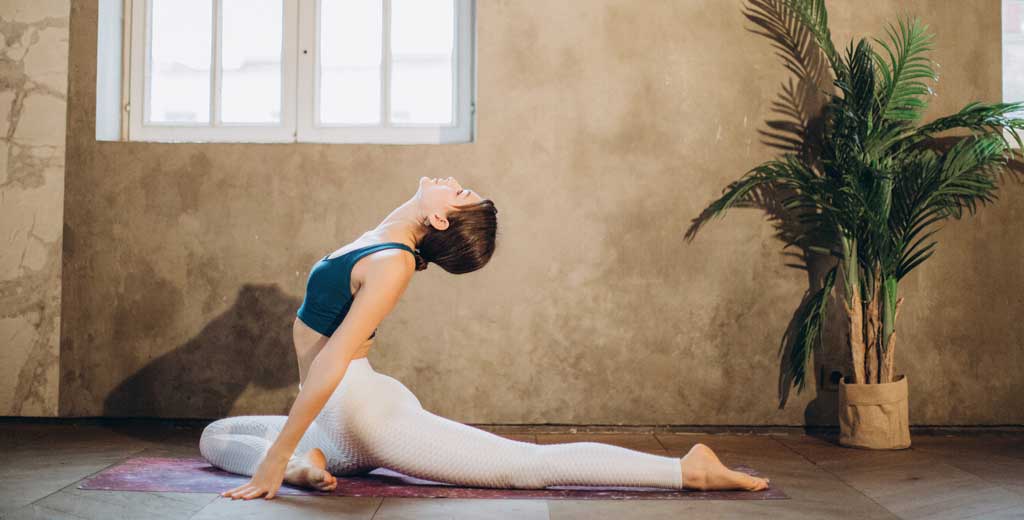
3) The Reclined Hero Pose (Supta Virasana)
This pose stretches the quadriceps and the muscles surrounding the knee, and is another useful pose. Start on your hands and knees to perform this pose. The sole of your foot should be on the ground when you extend one leg back. Relax your shoulders and arms as you lean back on your hands. Be cautious while maintaining alignment between your hip joint and your bent knee. Spend 5 to 10 breaths in this position.
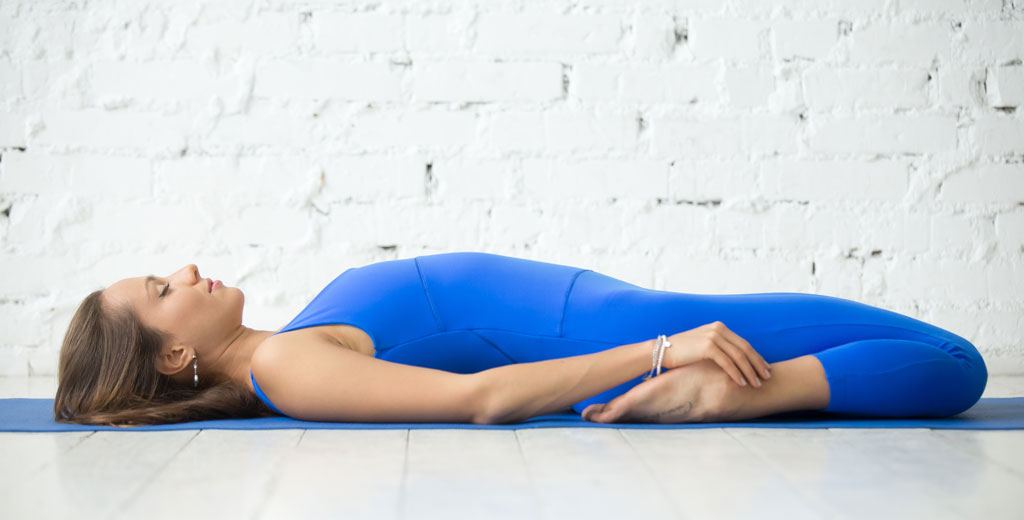
4) The Wide-Legged Forward Bend (Prasarita Padottanasana)
Prasarita Padottanasana, also known as the wide-legged forward bend, is a pose that stretches the hamstrings and the muscles that surround the knee. Stand with your feet wide apart and bend forward at the waist to perform this pose. You can either place your hands on the ground or the backs of your legs. Then, slowly raise them toward your back. Spend 5 to 10 breaths in this position.
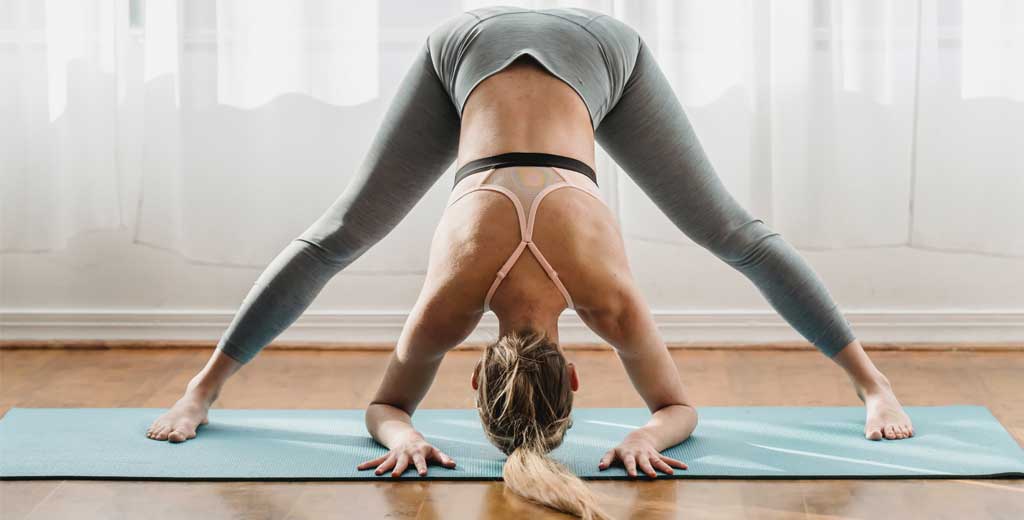
5) The Chair Pose (Utkatasana)
This position works to strengthen the knee-supporting muscles. To perform this pose, stand with your feet together and squat down gradually. Keep your knees together, your back flat, and your chest raised. For 5 to 10 breaths, maintain this posture.
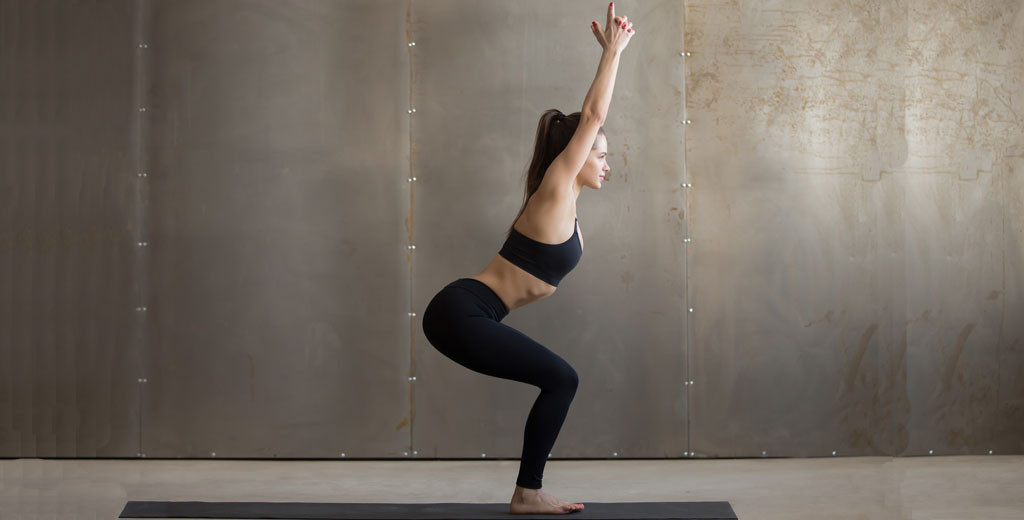
6) The Seated Forward Bend (Paschimottanasana)
It stretches the hamstrings and the knee-cap muscles. Sit on the floor with your legs out in front of you to do this stance. Allow your arms to extend forward as you gradually drop your chest toward your legs. For 5 to 10 breaths, maintain this posture.
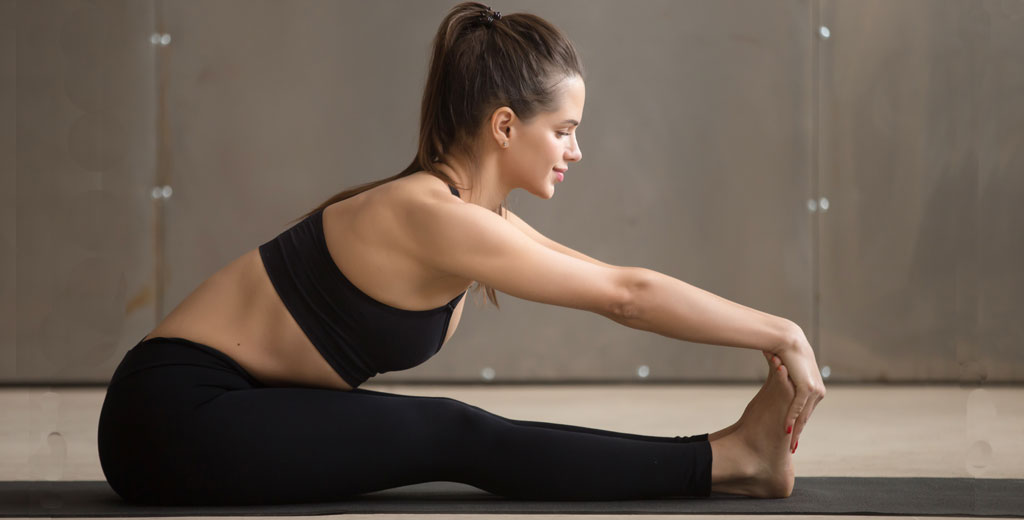
7) The Downward Facing Dog Pose (Adho Mukha Svanasana)
This pose supports the development of the knee-supporting muscles. Start on your hands and knees to perform this pose. Put your palms on the ground, lift your knees off the floor, and thrust your hips upward. Be sure to maintain straight legs and bowed knees. For 5 to 10 breaths, maintain this posture.
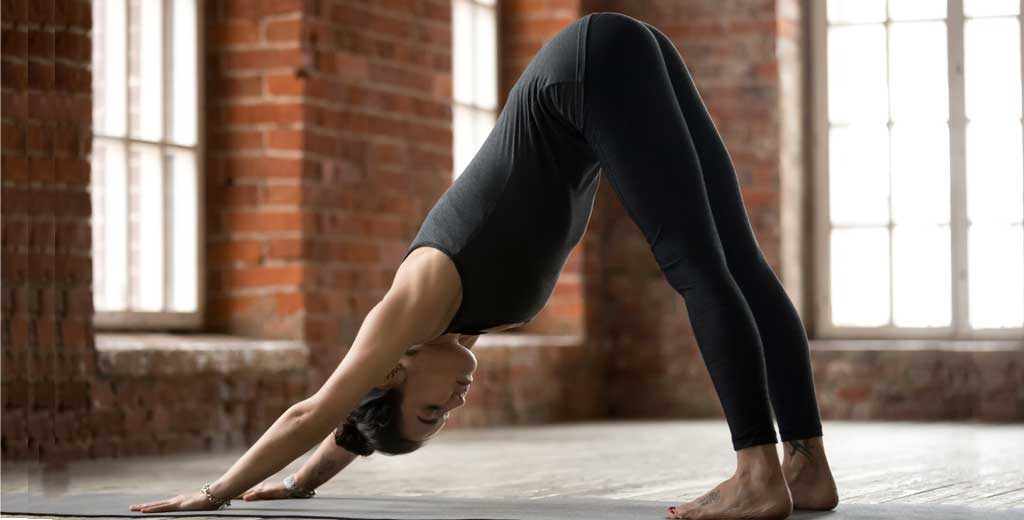
These 7 yoga poses are great for relieving knee pain and improving knee joint mobility. Try to practice these poses regularly, as they will help to reduce your knee pain and improve your overall flexibility and range of motion. If you are suffering from knee pain, make sure you consult a doctor before starting any yoga practice.
Frequently Asked Questions:-
How does yoga help with knee pain?
In order to assist alleviate pain and stiffness in the knee joints, yoga is a type of exercise that focuses on particular postures and motions.
How frequently should I do yoga to relieve knee pain?
In order to benefit the most from yoga for knee pain. It is advised to practice three or more times per week.
What advantages does yoga provide for treating knee pain?
Yoga for knee pain can assist to increase the joint’s flexibility and strength, lessen pain and stiffness, and enhance balance.
Are there any precautions to take when practicing yoga for knee pain?
When practicing yoga for knee pain it is important to listen to your body and stop when it becomes too uncomfortable. It is also important to use props such as blocks, blisters, and straps to help support the body in difficult poses.
What can I expect yoga session designed to relieve knee pain?
During a yoga session designed to relieve knee pain, you can expect to focus on postures to help to increase flexibility and strength in the knee joint. The yoga session will also relax the muscles.

